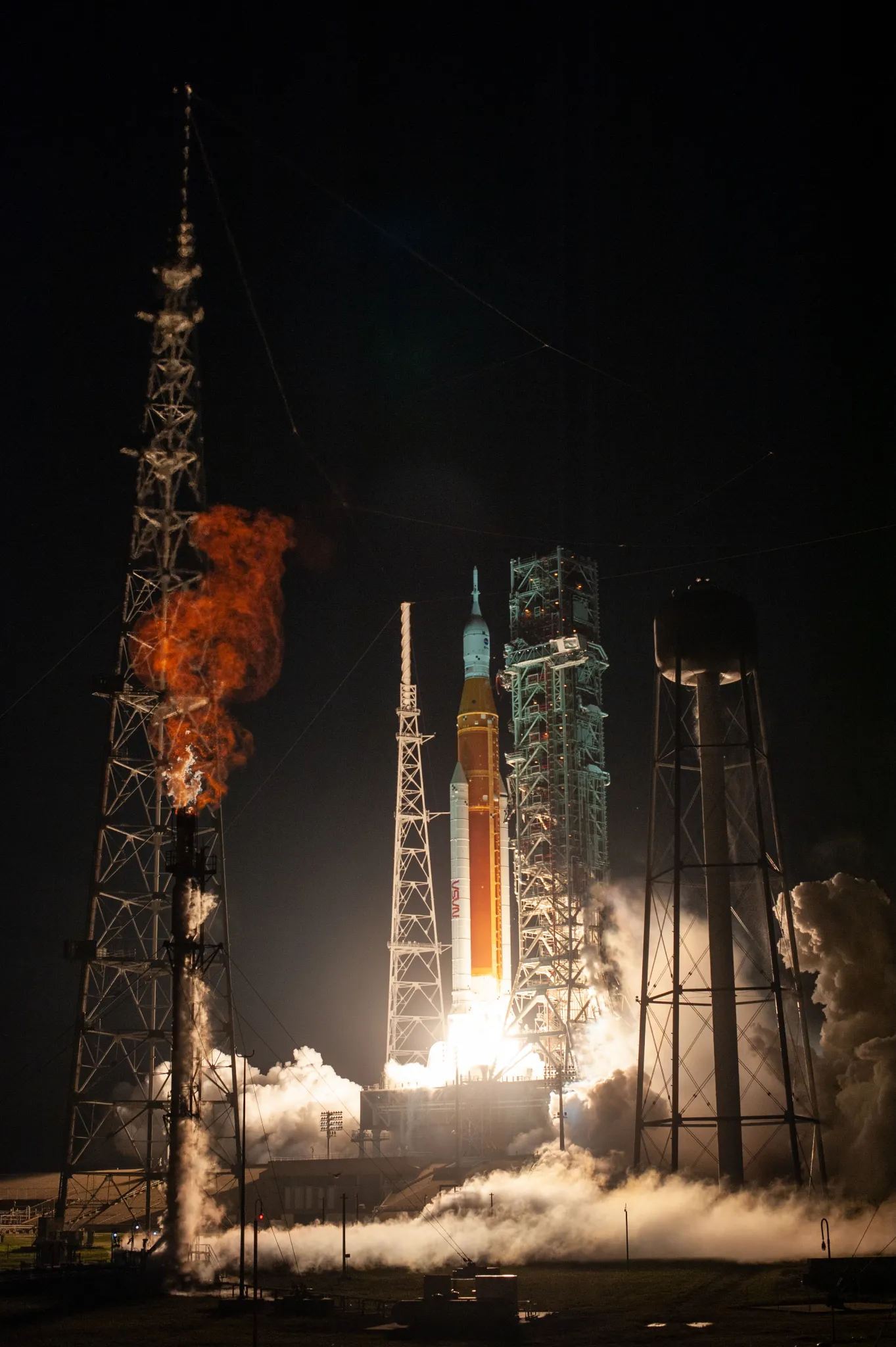Space exploration has always captured the imagination of humanity, and NASA’s Artemis Program is poised to take that fascination to new heights—quite literally. This ambitious initiative marks a significant leap forward in our understanding of the cosmos, as well as our ability to explore it. Let’s embark on a journey through the Artemis Program, exploring its objectives, timeline, and the innovative technologies driving it.

Table of Contents
Introduction to NASA’s Artemis Program
The Artemis Program, named after the Greek goddess of the Moon, aims to return humans to the lunar surface by the mid-2020s. This bold undertaking builds upon the legacy of the Apollo missions, with the primary goal of establishing sustainable human presence on the Moon and preparing for future crewed missions to Mars.
Mission Objectives
Moon Exploration Goals
At the heart of Artemis lies the objective to explore the Moon comprehensively. This involves not only sending astronauts to conduct experiments but also deploying cutting-edge robotic technologies for in-depth analysis of lunar terrain.
Scientific Research Objectives
Beyond the romantic allure of walking on the Moon, the Artemis Program is a scientific endeavor. NASA aims to unravel the mysteries of the lunar surface, studying its geology, resource potential, and its role in understanding the early history of our solar system.
Artemis Program Timeline
Key Milestones and Launches
The Artemis timeline is dotted with crucial milestones, from the maiden launch of the Space Launch System (SLS) to the first crewed Artemis mission. Understanding this timeline provides a glimpse into the meticulous planning required for such a grand venture.
Planned Missions and Their Purposes
Artemis is not a one-off mission but a series of planned expeditions. Each mission serves a unique purpose, contributing to the overall goal of human lunar exploration. From Artemis I, an uncrewed test flight, to Artemis III, where astronauts will set foot on the lunar surface, each mission is a building block in this cosmic adventure.
Lunar Gateway Project
Explanation of the Lunar Gateway
A critical component of the Artemis Program is the Lunar Gateway—a space station orbiting the Moon. This orbital outpost will serve as a staging point for crewed missions to the lunar surface, demonstrating NASA’s commitment to sustainable exploration beyond Earth’s orbit.
Its Role in Supporting Artemis Missions
The Lunar Gateway isn’t just a stopover; it’s a pivotal element in ensuring the success of Artemis missions. It provides a platform for scientific experiments, a communication hub, and a gateway for future deep-space exploration.
Space Launch System (SLS)
Introduction to SLS
Central to the Artemis Program is the Space Launch System, a powerful rocket designed to carry astronauts and cargo beyond low Earth orbit. Its capabilities are essential for launching the Orion spacecraft and other components crucial for lunar missions.
Its Importance in Artemis Spacecraft Launches
SLS isn’t merely a means of transportation; it’s the backbone of Artemis spacecraft launches. Its ability to carry heavy payloads into deep space positions it as a key player in the success of the entire Artemis endeavor.
Orion Spacecraft
Overview of the Orion Spacecraft
The Artemis Program relies on the Orion spacecraft to ferry astronauts to and from lunar orbit. This sophisticated spacecraft, equipped with state-of-the-art technology, ensures the safety and success of human space missions.
Its Role in Crewed Missions
Orion isn’t just a vessel; it’s a haven for astronauts during their journeys. Its advanced life support systems, navigation tools, and radiation shielding make it a reliable companion for the challenges of deep-space travel.
International Collaboration
Partnerships with Other Space Agencies
Artemis is not a solo act; it’s a global collaboration. NASA has partnered with international space agencies, fostering cooperation in scientific research, technological innovation, and the collective dream of expanding human presence in space.
Collaborative Efforts in the Artemis Program
From European contributions to the Lunar Gateway to Japanese expertise in robotic exploration, the Artemis Program showcases the power of unity in humanity’s quest for knowledge beyond our home planet.
Challenges and Solutions
Technical and Logistical Challenges
The journey to the Moon is not without obstacles. Technical challenges, logistical complexities, and the harsh environment of space pose formidable hurdles. However, NASA’s team of experts continually innovates to overcome these challenges.
NASA’s Strategies to Overcome Obstacles
In the face of adversity, NASA employs a combination of experience, cutting-edge technology, and adaptive strategies. The Artemis Program is a testament to human resilience and the determination to push the boundaries of what’s possible.
Impact on Scientific Knowledge
Potential Discoveries on the Moon
Artemis isn’t just about planting flags; it’s about unlocking the Moon’s secrets. From understanding its geological history to discovering resources that may support future space endeavors, Artemis promises groundbreaking discoveries.
Contributions to Space Exploration Advancements
The knowledge gained from Artemis missions extends beyond lunar exploration. Scientific breakthroughs, technological advancements, and lessons learned contribute to the broader field of space exploration, influencing future endeavors.
Critics and Controversies
Public Opinions and Concerns
Any grand venture is met with scrutiny. Artemis is no exception, facing criticism and concerns from various quarters. Public opinions on the program range from excitement about space exploration to concerns about its cost and potential risks.
Addressing Controversies Surrounding the Program
NASA actively engages with the public, addressing concerns transparently. By fostering open communication and providing insights into the program’s benefits, the space agency works to garner support for this monumental undertaking.
Space Exploration Beyond Artemis
Future Plans and Missions
Artemis is just the beginning. NASA envisions a future where human presence extends far beyond the Moon. Mars, asteroids, and other celestial bodies beckon, and the Artemis Program paves the way for the next chapters in human space exploration.
The Broader Vision for Human Space Exploration
Beyond specific missions, the Artemis Program aligns with a broader vision of human space exploration. It lays the groundwork for sustained exploration, leveraging advancements to enable humanity’s journey into the far reaches of the cosmos.
Public Engagement and Education
NASA’s Efforts to Involve the Public
NASA recognizes the importance of public engagement. Through outreach programs, social media, and educational initiatives, the space agency invites the public to be part of the Artemis journey, fostering a sense of shared exploration.
Educational Initiatives Related to Artemis
Artemis isn’t just for astronauts; it’s an opportunity for students, scientists, and enthusiasts to engage with space exploration. Educational initiatives tied to the program inspire the next generation of space enthusiasts and scientists.
Technology and Innovations
Technological Advancements in the Artemis Program
From advanced propulsion systems to innovative life support technologies, Artemis pushes the boundaries of what’s possible. The program serves as a catalyst for technological innovations that have applications far beyond space exploration.
Contributions to Broader Scientific and Technological Fields
The ripple effect of Artemis extends beyond space. The technologies developed for the program find applications in healthcare, communications, and various other scientific and technological domains, enriching our daily lives.
Environmental Considerations
Sustainable Space Exploration Practices
As we venture into space, sustainability is a key consideration. Artemis emphasizes responsible exploration, minimizing the environmental impact of human activities on the Moon and beyond.
Mitigating Environmental Impacts
NASA takes proactive measures to ensure that the Artemis Program aligns with principles of environmental stewardship. By incorporating sustainable practices, the space agency strives to balance exploration with environmental responsibility.
Conclusion
In conclusion, NASA’s Artemis Program is not just a journey to the Moon; it’s a testament to human ingenuity, collaboration, and the insatiable curiosity that drives us to explore the unknown. As Artemis unfolds, it paves the way for a future where the cosmos becomes an extension of our collective home.
FAQs
- Is Artemis only about returning to the Moon, or does it have broader goals?Artemis goes beyond lunar exploration. While the Moon is a focal point, the program sets the stage for future human missions to Mars and other celestial bodies.
- How does NASA address concerns about the cost of the Artemis Program?NASA maintains transparency and communicates the long-term benefits of Artemis. The program’s impact on scientific knowledge and technological advancements justifies its cost.
- What role do international partners play in the Artemis Program?International collaboration is integral to Artemis. NASA works closely with other space agencies, pooling resources and expertise for mutual success.
- How can the public get involved in the Artemis journey?NASA encourages public engagement through social media, educational programs, and outreach initiatives. Anyone can be part of the excitement surrounding Artemis.
- What are the potential spin-off technologies from the Artemis Program?The technologies developed for Artemis have applications beyond space exploration, contributing to advancements in various scientific and technological fields.









